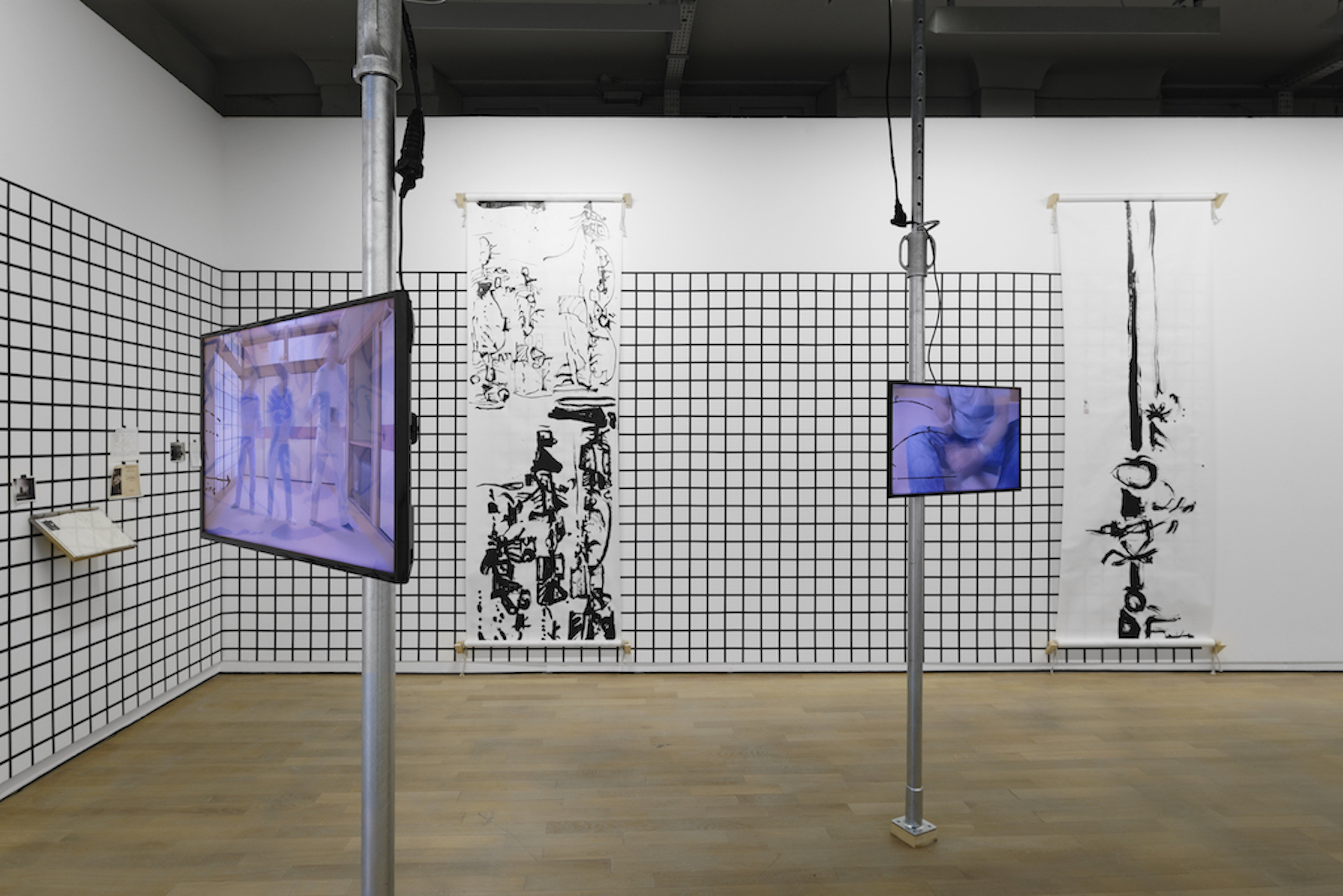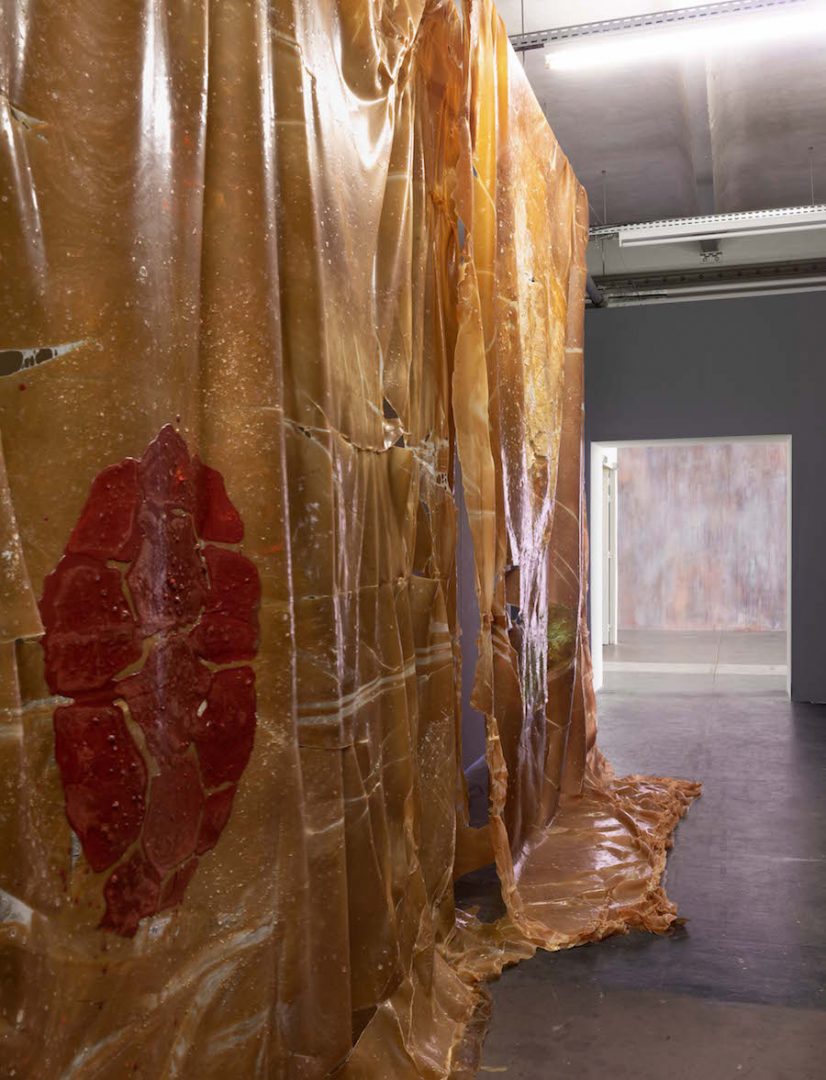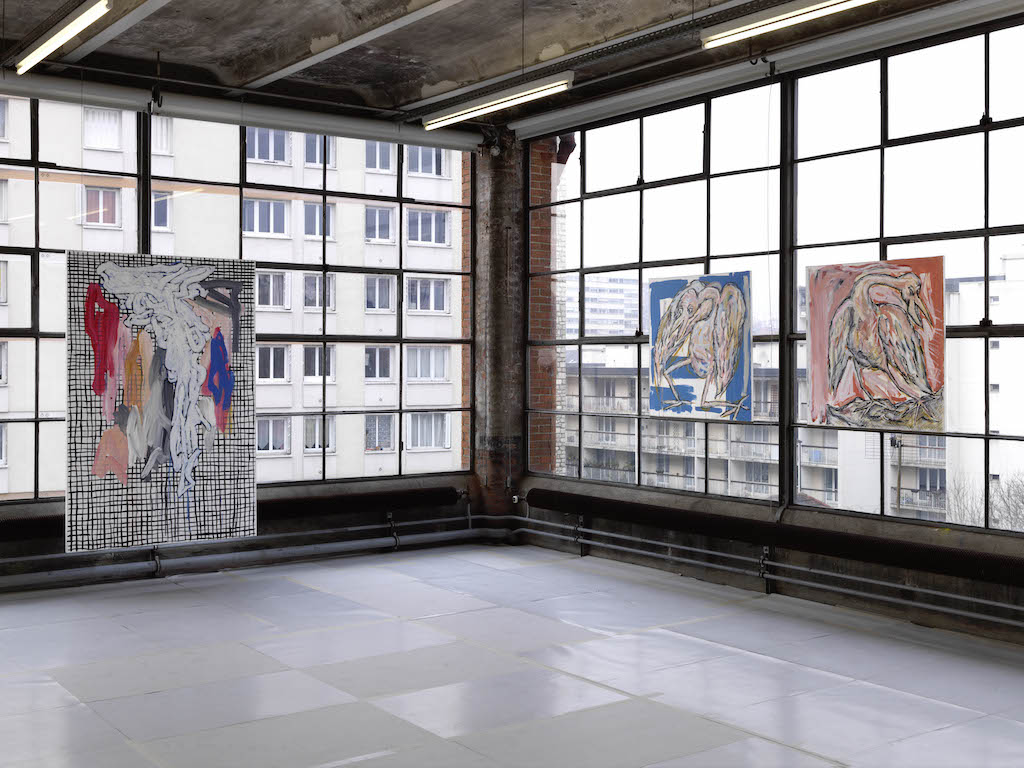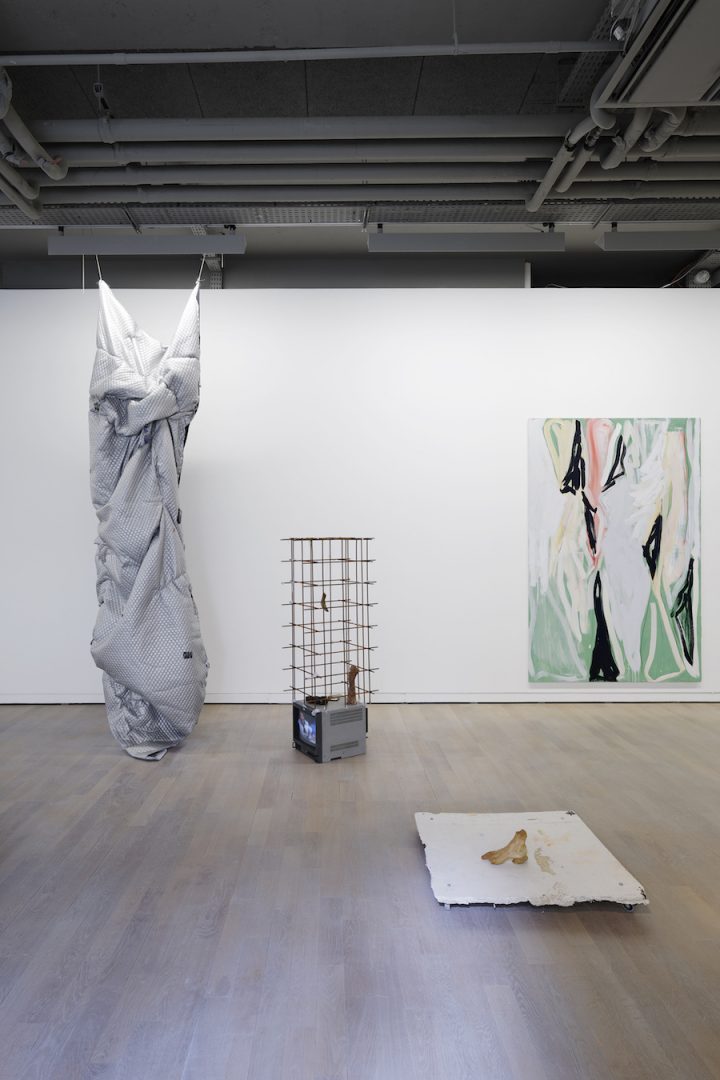Claire Le Restif

Since 2003, Claire Le Restif has been director of the Le Crédac contemporary art centre at Ivry-sur-Seine, managing to offer it both undeniable visibility and identity, displaying an uncompromising approach in tune with the tendencies of the day, while at the same time clearly asserting her commitments. In 2011 she organized the centre’s move to the Manufacture des Œillets, and inaugurated the new venue with a Mircea Cantor show. Last October, she was the curator of the 2019 Fondation d’entreprise Ricard Prize, which was awarded to the Colombian artist Marcos Avila Forero. For this selection, she preferred to remain faithful to regular artistic company, putting that session under the aegis of an extension of her Ivry-based activity rather than under the youth cult banner and an exacerbated quest for new talent. Having negotiated this parenthesis, the art centre is now resuming its former life with its regular programme of new exhibitions. But where does the normality of an art centre lie in the 21st century? I put a few questions to a director with a passion for her job.
Patrice Joly: Unlike many curators who have gone before you in curating the selection for the Ricard Prize, you chose rather to invite artists you knew well, who already had a place in the French art scene and/or whom you had already exhibited: should we regard this stance as a reaction to the overarching youth cult that informs so many contemporary art organizations?
Claire Le Restif: Creating surprises is not a challenge that interests me, and Colette Barbier, director of the Fondation d’entreprise Ricard, gave me complete freedom on that score. I know that artists tend to expect more from this type of exercise than to be reduced to “competing”. Each Prize ceremony, for the past 21 years, tells us something about the day and age. My proposal, “Le Fil d’alerte”, wanted to respond in particular to the current debate about greater diversity and inclusion in a white, male, well-off environment. You know, anyway, my position in favour of the exhibition seen as a shared moment when works rub shoulders with each other. So this is also an exhibition like any other. You’re right, I chose artists I talk and work with, but not just them. This choice illustrates the diversity of artistic activities and artists’ origins. Some find their subject on their doorstep (Boudvin…), others on the other side of the world (Kiwanga, Choisne, Peñafiel Loaiza…). More than a theme, it’s an attitude that I wanted to focus on, because all the artists involved in “Le Fil d’alerte” display an attentiveness to the world, and kindle forms of awareness by way of sensitive and militant gestures, conveying alternative ways of thinking. I think I’ve succeeded in getting the heterogeneity of activities and subjects to hold together, even if several people like Choisne, Maheke and Kiwanga gather around colonial and feminist issues which are so necessary these days. On the other hand, what I have not resolved in this context is the place reserved for performance, which Maheke and Kiwanga are involved with as much as installation.

In the press release for “J’aime le rose pâle et les femmes ingrates” [I like pale pink and coarse women], the exhibition organized by Sarah Tritz at Le Crédac, with its extremely enigmatic title, you talk about group shows held by artists which have had an effect on you, and, oddly enough, you don’t mention any French artists or any exhibitions in French institutions. Does this mean that no ‘made in France’ proposition finds favour in your eyes? What is this due to, in your view? To a shortage of artists/curators who are up to the challenge, to the small budgets of French organizations, or to the peripheral aspect of the French scene?
A little controversy never did anyone any harm! In fact the group shows organized by artists and the light these shows shed on their own work have always interested me. I quote “The Russian Linesman” by Mark Wallinger (Hayward Gallery, London, 2009); “An Aside” by Tacita Dean (Camden Art Centre, London, 2005); “La carte d’après nature” by Thomas Demand (NMNM, Monaco and Matthew Marks Gallery, New York, 2011); and “The Inaccessible Poem” by Simon Starling (Fondazione Merz, Turin, 2012). But those who talk of preference are not talking about exclusiveness! I could have brought up the invitation made by Marc-Olivier Walher, when he was director of the Palais de Tokyo, to Ugo Roninone as curator of the exhibition “The Third Mind” in 2007. But that doesn’t sort out the issue of French artist-curators that you’re raising. In France, it’s artist-run spaces, where certain shows are signed by artist-curators, which have partly trained me. I’m thinking of Public in Paris (twenty years ago, agreed), where Boris Achour (here I’m just talking about the artist in the collective) was active, the Irma Vep Lab project at Chatillon-sur-Marne, run by Laurent Montaron, and Glassbox in Paris, with Jan Kopp and Stefan Nikolaev. Today, Pauline Perplexe at Arcueil and Le Wonder/Zénith at Nanterre are also models where artists are discovered, but where the curatorial activity is perhaps not as central as it is at the DOC in Paris, for example. In France, it seems to me that artists are quite often invited to devise exhibitions in the context of the collection of a FRAC (Regional Contemporary Art Collection) or a museum, which is interesting but it structures the invitation, doesn’t it? I note three exhibitions which have made news this autumn in the Ile-de-France art centres of the TRAM network which have been organized by artists: Mohamed Bourouissa at the Galerie Edouard-Manet in Gennevilliers, Benoît Maire at Le Plateau-FRAC Ile-de-France, and Sarah Tritz at Le Crédac, as mentioned. All three are interesting in more than one respect.

How in general do you make your choices for the shows at Le Crédac? Is there a line, a definite orientation, which might also tally with an involvement in favour of re-balancing the presence of women artists, for example, or supporting minorities, sexual and other, or do you let yourself be guided by purely aesthetic affinities: what takes precedence?
I am of course keenly aware of parity, in invitations made to artists, art critics, residents in school environments and other thinkers and project leaders at Le Crédac. I’m also keenly aware of the team’s composition and the governing people. An artist sits on the board of directors. To give you some figures, since 2013, for example, the programming has paid greater attention to diversity of origin and gender, and provided a larger place for women. Out of 20 solo shows, twelve have been devoted to women:
Thu Van Tran, Alexandra Bircken, Ana Jotta, Estefanía Peñafiel Loaiza, Liz Magor, Caecilia Tripp, Lara Almarcegui, Lola Gonzalez, Louise Hervé and Chloé Maillet, Delphine Coindet, Nina Canell, Sarah Tritz, and eight to men: Michel Aubry, Bruno Pélassy, Koenraad Dedobbeleer, Shimabuku, Hugues Reip, Corentin Canesson, Friedrich Kunath and Benoît-Marie Moriceau.
To answer your question about aesthetic affinities, of course I don’t overlook visual power, but my programming attempts to convey precise positions, by inviting artist-anthropologists, activist artists, go-betweens, researchers, poets, and art history enthusiasts, all at once, for whom orality, ecology, the colonization of territories and/or bodies, the cosmological vision of the world, identities, feminism, and queer theory are all part and parcel of their work.

Since you’ve been directing Le Crédac, what’s changed in the way of working in art centres? Is there more or less freedom, are there more administrative restrictions, which gnaw at the time you have to think about things? The director of an art centre in eastern France told me that since she had been running it, she no longer devoted more than 5% of her time to research and discovering artists and new proposals, and she felt kind of bitter about that. How are things for you? Do you still have time to go looking outside the well-marked paths of discovery?
The situation of art centres can’t be compared from one place to the next, it’s very tied up with the areas which they are part of, and political decisions play a part. Le Crédac’s main partner is the City of Ivry-sur-Seine, which has been backing its programmes for 30 years. Le Crédac has evolved a great deal. Although it is still modest, its budget has increased, its team has been strengthened, and it is now made up of professionals. That’s of paramount importance. As you know, I’ve worked hard on installing Le Crédac at the Manufacture des Œillets, and the venue, as a work tool, is now operational. This re-organization has helped me to earmark time for visiting artists’ studios, which are a resource for me. We are lucky in Ile-de-France. Thanks in part to my teaching (I’m a guest professor at Sorbonne-Université, as part of the professional Master’s degree “Contemporary art and how it is exhibited”), I’m permanently in touch with art schools and young artists, and our programmes within d.c.a. (the association for the development of French art centres) have gradually been including Le Crédac even more in international cooperation networks, by implementing joint productions which make it possible to put on exhibitions, and produce and disseminate artworks. I also listen to the advice offered by artists and my colleagues in France and abroad, so as to be constantly discovering talents to be brought to the fore, and, where relevant, presented again. But it’s true that directing an art centre is an exercise which you must be totally dedicated to. It’s demanding, from both an administrative and an artist point of view. It’s very hard, if not impossible, with not very much funding, to successfully accomplish all the tasks involved, and some of my colleagues are in untenable situations.

You’ve introduced many new features to Le Crédac, and created new programmes such as the online project Royal Garden, you opened the Crédakino in 2016, and you’ve proposed 5 dans les murs (an invitation made to five curators to hold a show at Le Crédac: Chris Sharp, Hélène Meisel, Brice Domingues, Catherine Guiral, Sarah Tritz), and there’ll soon be a residency within the centre: how do you see the future of art centres in France? Won’t the way they are labelled (which you’ve participated in) contribute to the standardization of artistic and curatorial proposals to the detriment of the inventive aspect of art centres, where people enjoy going to be surprised, and exercised?
As the artist Pierre Joseph put it, “art centres have a different centre of gravity to that of the outside world”. Semantics have their importance—in the name “art centre” there is the word ‘centre’. But what is an art centre? It’s an essential player in the ecosystem of contemporary art. Its DNA is what supports creation, research, distribution and mediation. It is above all a workplace for artists, a place, to put it more precisely, where they can experiment and permit themselves to do things. It’s rare and precious, but fragile. This is why we have collectively thought that a label might help to better identify, describe and strengthen art centres. This new label, “contemporary art centre of national interest”, came into being in 2017, after a lengthy process. I was president of the d.c.a. network when we managed to sign the first ministerial circular associated with art centres in 2011, after which we embarked on a concerted line of thinking and decision-making hailing from the field, which led us to create this label, in discussion with the Ministry of Culture. I think it’s the first label that comes from the field and it quite precisely defines its brief in dialogue with partners and their commitments to artists. For my part, I think that it’s going in the right direction, even if we are not naïve, because all our programmes are bound up with political decisions. I think that this label will not standardize anything in terms of art. France’s art centres are forever questioning themselves, like no other artistic and cultural facility, probably because of their involvement in research and their accompaniment of artists.
As the label suggests, art centres must be places akin to art surgeries. The Le Crédac programme, for example, is neither festival-like, nor ephemeral. The art project associated with a programme of constant support for audiences is a long-term project: the living word uttered in front of works is a basic factor of it. Le Credac’s visitors department which is nothing less than the art centre’s “fan-belt”, is forever re-examining its transmission tools with regard to the development of current art praxes, just as it strives to transmit vital knowledge about critical theory. The art centre is a place of active involvement, where works are, to be sure, on view to the public, but where the public is also on view to the works! The art centre must remain an area of openness. Let us bear in mind, more than ever these days, that, since the postwar period in Europe, the doctrinal foundations of resistance to fascism have been formulated in a project about which everyone is agreed: education through art. An artistic and cultural project helps to enable the audience to understand that the works on view belong to the present context of their lives, and open up spaces of freedom, veering towards that “outside of art” represented by history, the city beyond the cultural place, and the field of politics, all places where the non-formatted individual can be fulfilled. I think that the artistic and cultural place must be conceived from “within”, its point of origin, support and reflection being artists’ projects. If it is bound to remain welcoming and hospitable, learning about artworks must take pride of place, squarely supporting the fact that culture creates projects.

Can you tell us about your upcoming programme? Will 2020 be a year of major upheavals for Le Crédac?
2020 is a year of local elections which, I hope, will not bring too many major upheavals with it. The life of an art centre is more made up of continuity, patience, and diligence: a long distance runner rather than a sprinter. We’re starting the year 2020 with the exhibition “Winter Gardend” showing the work of the German artist Jochen Lempert. He is designing an arrangement of display cases, in the manner of botanical cabinets containing photographic compositions describing the plant motif. The black-and-white silver prints are the result of a selection within a body of photographs taken on a daily basis on the spot, and developed in his own laboratory. With his painstaking and extremely erudite eye—biology, ethology, art history—he captures trivial phenomena of the world and brings them to our attention in a sober and poetic approach.
Our loyalty to artists regularly involves us in extending our relationship by way of a solo show. We invited Jochen Lempert in 2014 for a group show jointly organized with Chris Sharp, “The Registry of Promise”, organized in four sections in four European venues, including Le Crédac. In April 2020, we are inviting Kapwani Kiwanga who, for her part, studied anthropology before embarking on art. She has retained that methodology for setting up procedures for undertaking research. Somewhere between fiction and documentary, she questions hegemonic narratives and develops alternative propositions, formally conveyed by video, performance and photography, as well as sculpture.
Autumn 2020 will be devoted to the British artist Derek Jarman, who was born in 1942 and died of the consequences of AIDS in 1994. As a film director, scriptwriter, actor and gay rights activist, his visual work still remains to be discovered. We will be organizing his first show in France, which will be accompanied by a retrospective of the artist’s films at the Crédakino and the ‘art et essai’ moviehouse in Ivry le Luxy, as well as a performance programmed with the Festival d’Automne in Paris.
What is more, as part of the “artists’ residencies programme” promoted by the Regional Council of Ile-de-france and with the backing of the city of Ivry-sur-Seine, Le Crédac is initiating a ten-month research project with Simon Boudvin. From his studio at Le Crédac, he will embark on a photographic project involving the city, dovetailing his interest in architecture and urban ecology.
Image on top: Marcos Ávila Forero, Théorie du vol des oies sauvages, notes sur les mouvements ouvriers, 2019. Installation, calligraphy, videos, notebook. View of the exhibition Le fil d’alerte – 21e Prix Fondation d’entreprise Ricard. Photo : Aurélien Mole / Fondation d’entreprise Ricard.
- From the issue: 92
- Share: ,
- By the same author: Bouchra Khalili, Sophie Legrandjacques, Sophie Lévy, Christine Macel, Wilfried Huet / GAGARIN,
Related articles
Céline Poulin
by Andréanne Béguin
Émilie Brout & Maxime Marion
by Ingrid Luquet-Gad
Interview with Warren Neidich
by Yves Citton

